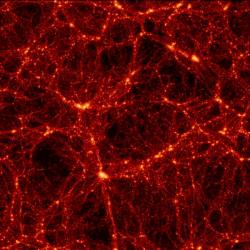 When we think of a galaxy, we think of our own Milky Way or perhaps Andromeda; a majestic spiral containing hundreds of billions of stars. Or maybe we think of an irregular galaxy, not so majestic-looking, but still made of regular stuff, like stars, planets… people.
When we think of a galaxy, we think of our own Milky Way or perhaps Andromeda; a majestic spiral containing hundreds of billions of stars. Or maybe we think of an irregular galaxy, not so majestic-looking, but still made of regular stuff, like stars, planets… people.
But new research shows that there are galaxies out there which are almost completely comprised of dark matter. They’re called dwarf spheroidals, and they only contain a few stars and almost no gas. Instead, they’ve got an overwhelming amount of dark matter, whose gravity compacts what few stars it has into a roughly spherical shape. And because they don’t have many stars, they’re hard to see, even when they’re nearby.
An international team of researchers has developed a simulation to explain how galaxies like this could form. They used supercomputers to calculate how galaxies interact. When a smaller galaxy collides with a much larger galaxy, friction causes the gas to slow down and be stripped out a galaxy, while the stars and dark matter continue on.
Without this gas, the galaxy can’t continue making stars. It’s only got the stars that had formed before the collision. A massive galaxy can also strip away stars and material through a process called “tidal shocking”. Between these two effects, you can end up with a galaxy devoid of regular matter – all that’s left is dark matter.
Original Source: Stanford News Release

What is dark matter really is it the empty space or is it something else?
dark matter and empy space are way different. empty space is empty space but even though dark matter has no mass or volume it is still a particle that can bend light. scientists also say that millions of dark matter particles are passing through us and the earth right now kind of like nutrinos and kind of like photons